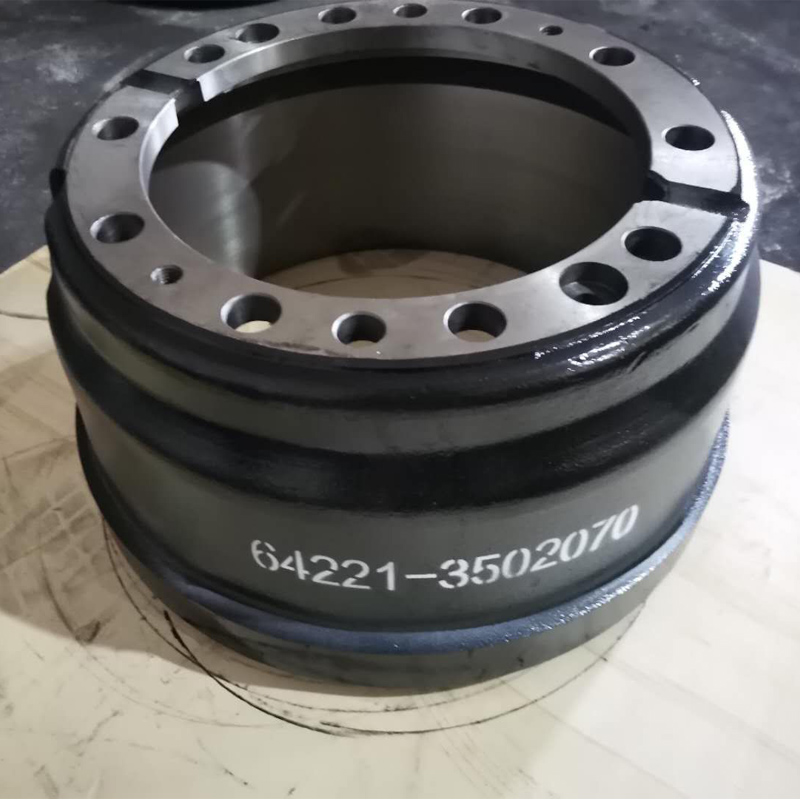Oct . 16, 2024 19:56 Back to list
Comparing Brake Drums and Rotors for Optimal Vehicle Performance and Safety
Brake Drums vs. Rotors Understanding the Differences and Applications
When it comes to automotive braking systems, understanding the components in play is essential for both safety and performance. Two of the primary components that often come up for discussion are brake drums and rotors. While they serve the same fundamental purpose—slowing down or stopping a vehicle—they operate on different principles and offer distinct advantages and disadvantages. This article delves into the characteristics of brake drums and rotors, comparing their functions, applications, and maintenance considerations.
Brake Drums
Brake drums are typically found in older vehicles and are primarily used in the rear braking systems of many light trucks and sedans. The design consists of a circular drum that rotates with the wheel. Inside the drum, brake shoes, which are curved pieces of friction material, press against the interior surface of the drum to create the necessary friction for stopping the vehicle.
One of the main advantages of brake drums is their cost-effectiveness. They are generally cheaper to manufacture and install compared to disc brakes. Additionally, drum brakes excel in certain conditions, providing strong braking power when the vehicle is loaded, which is particularly advantageous for trucks and SUVs frequently carrying heavy loads.
However, drum brakes have a few notable drawbacks. They tend to heat up faster than disc brakes, leading to brake fade under continuous use, especially during prolonged stops or in towing situations. Moreover, drum brakes are more complicated to service, as their design often requires disassembly for maintenance.
Brake Rotors
In contrast, brake rotors, commonly found in modern vehicles, are flat, disc-shaped components that function with brake calipers and pads. When the driver presses the brake pedal, fluid is sent to the calipers, forcing the brake pads against the rotor. This contact generates friction to slow down or stop the vehicle.
brake drums vs rotors

Brake rotors offer several advantages over drum brakes. One significant benefit is heat dissipation; the open design of rotors allows for better airflow, reducing the risk of overheating and resulting brake fade. Additionally, rotors provide more consistent braking performance, particularly in wet conditions, as they are less susceptible to moisture retention.
The design of disc brakes also allows for easier inspection and maintenance, as the components are more accessible compared to drum brakes. This often translates to lower long-term maintenance costs, despite the higher initial investment.
However, disc brakes can be more expensive upfront and may not deliver the same level of performance under certain conditions, particularly when heavily loaded. Some vehicles still opt for drum brakes in the rear for cost reasons, as they can be sufficient for regular driving conditions.
Choosing Between Brake Drums and Rotors
When deciding between brake drums and rotors, several factors come into play, including vehicle type, driving habits, and budget. For everyday drivers who primarily use their vehicles for commuting and occasional hauling, either option may suffice, although rotors are generally recommended due to their superior performance and maintenance.
For heavy-duty applications, such as towing or transporting heavy loads, drum brakes may be beneficial, but careful consideration should be given to the potential for overheating. Ultimately, the choice will depend on the specific needs of the vehicle and driver.
Conclusion
Both brake drums and rotors play crucial roles in vehicle braking systems, each with its unique advantages and limitations. Understanding the differences can help vehicle owners make informed decisions regarding maintenance, upgrades, and overall vehicle safety. As technology continues to evolve, brake systems may see further advancements, but the fundamental principles of braking will always hinge on one key factor effective friction. Whether embracing traditional drum brakes or modern disc designs, prioritizing brake performance and safety is essential for a safe driving experience.
-
Scania Brake Drums: OEM Quality for Optimal Safety & Durability
NewsAug.16,2025
-
R.V.I: Advanced Remote Visual Inspection for Precision
NewsAug.15,2025
-
Discover HYUNDA: Innovative Vehicles, Equipment & Solutions
NewsAug.14,2025
-
R.V.I: Unlock Advanced Insights & Real-time Performance
NewsAug.13,2025
-
Kamaz Brake Drum: Durable & Reliable for Heavy Duty Trucks
NewsAug.12,2025
-
Heavy Duty Iveco Brake Drum - Premium Quality & Safety
NewsAug.11,2025
